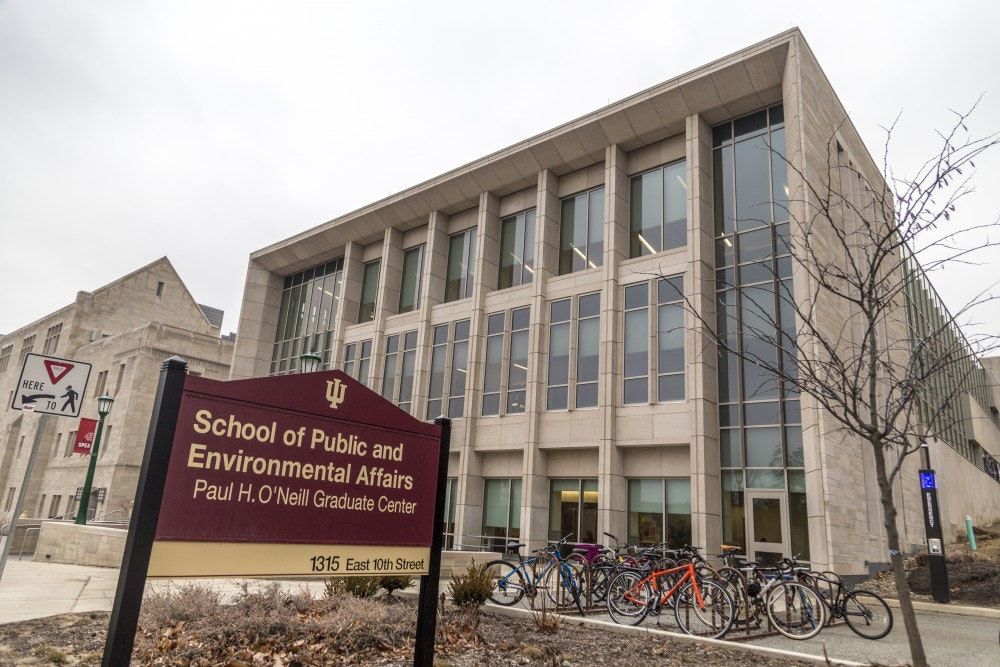|
CHICAGO -- It sounds like the kind of nerd fight that might make for a marginally successful SNL sketch: How do we get the young folks interested in federalism again? But for local government scholars, the multi-year discourse over how to stem declining interest in the American Society for Public Administration's local and regional governance section is a touchy subject.
Last week at ASPA's national conference at the Hyatt Regency Chicago, the debate came to a head. A group of scholars led by Chair Richard Feiock of Florida State University pushed through an amendment to the bylaws changing the definition of the Section on Intergovernmental Administration and Management (SIAM) to re-define the scope of the research its members undertake. The change was resisted by some who argued the new mission statement didn't adequately take into account the research on federalism and rural regions, and made minor omissions like failing to mention collaboration between the public and private sectors. After some debate, the section voted 16-14 for the new mission statement, with several grumbling that this was no way to increase membership. A more controversial measure to change SIAM's name to the Section on Governance was postponed for a year after Chair-elect Eric Zeemering made a motion to appoint a new committee to study the implementation of the new mission statement (and ostensibly consider new options for names). It averted what might have been a far nastier fissure in the group. (One fellow student told me the fight was the most interesting thing he saw at the five-day conference). The parliamentary moves in one esoteric wing of an academic discipline are less significant than the overriding concern among ASPA higher-ups that junior scholars are finding other outlets for their networking and research sharing. ASPA, like SIAM, is witnessing a pronounced decline in membership. Last fall, Dr. Feiock (my major professor at FSU) tapped Drs. Benoy Jacob at the University of Colorado-Denver, Cali Curley at Indiana University-Purdue University-Indianapolis (IUPUI), Jennifer Connolly at the University of Miami, and myself to report back on what SIAM needed to do to better brand itself with junior scholars. During our first conference call, most of us confessed we'd never heard of SIAM, and were unsure how membership might be useful for our careers. Herein lies part of the problem: Urban scholarship is highly fragmented between a number of disciplines, including sociology, political science, economics, urban planning, among many others (just look up the disciplines of a randomly selected volume of the Journal of Urban Affairs). Urban scholars have their own associations (Urban Affairs Association and APPAM, not to mention political science sections on policy and urban politics), and convincing them that ASPA membership has something unique to offer will be a tough task. These researchers often find more familiarity among scholars from other disciplines who share interests in specific urban policies like charter schools, public housing, gender and racial/ethnic equity and other forms of social stratification. The scholars SIAM wants to recruit are already being serviced by these specialized membership organizations. If we couldn't think of a reason to join, why would anyone else? How would anyone even know public administration's SIAM (an acronym with negative connotations for Thai residents) from the Society for Industrial and Applied Mathematics? Public administration sections are, frankly, far behind many of their peer disciplines in tapping into social media. Go to the Midwest Political Science Association conference in April, for instance, and watch the kinds of Twitter exchanges that break out. By comparison last week, the ASPA hashtag #ASPA2015 looked like it was being populated by about six highly caffeinated but extremely lonely people. SIAM (or whatever name it assumes next year) now has a blog here, hosted by the University of Illinois at Chicago's Jered Carr and Aleea Perry. Yours truly has been tapped with attempting to develop a social media presence for the section. But before you can sell new urban scholars on SIAM, the organization needs to develop a pitch that distinguishes this venue from the myriad options they have now. The problem is compounded by the mandatory short-term self-interests of untenured scholars who need to derive some benefit from membership in a section beyond networking. Junior scholars need to be laser focused on the tangible payoffs that will pad their tenure applications. A section like SIAM needs to provide an outlet where young (I use this term interchangably with "junior," even though I hardly qualify as "young" anymore) researchers can sharpen their papers, cultivating potential future research collaborators and get better panel placement. In good, old-fashioned economic terms, they need to be able to maximize their utility -- increase their chances of publication, or tap into new networks of collaborators with the potential for high short-term research payoffs. This might sound a bit selfish or myopic, but these are the realities facing the kinds of hungry folks any organization that hopes to survive needs populating its business meetings and paying dues. Luckily for SIAM, the section has a significant base of excellent scholars who have much to offer to junior analysts. The question is whether junior scholars can be successfully matched in ways that allow them to derive intellectual inspiration, productivity motivation, and take-home utility. The next year will be an interesting experience.
0 Comments
Leave a Reply. |
AuthorI work as an Assistant Professor at the O'Neill School of Public and Environmental Affairs at Indiana University Bloomington. There, I direct the MGMT Lab. Archives
January 2023
Categories |



 RSS Feed
RSS Feed
